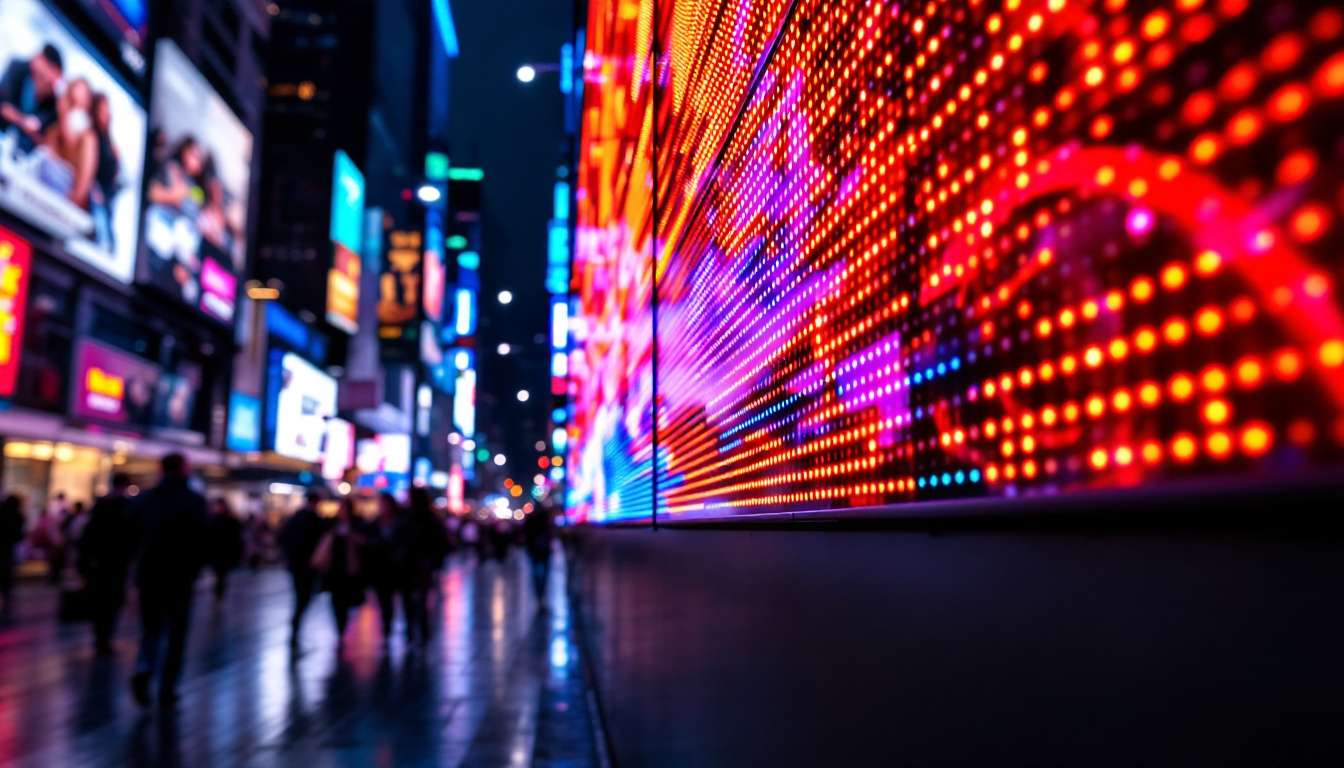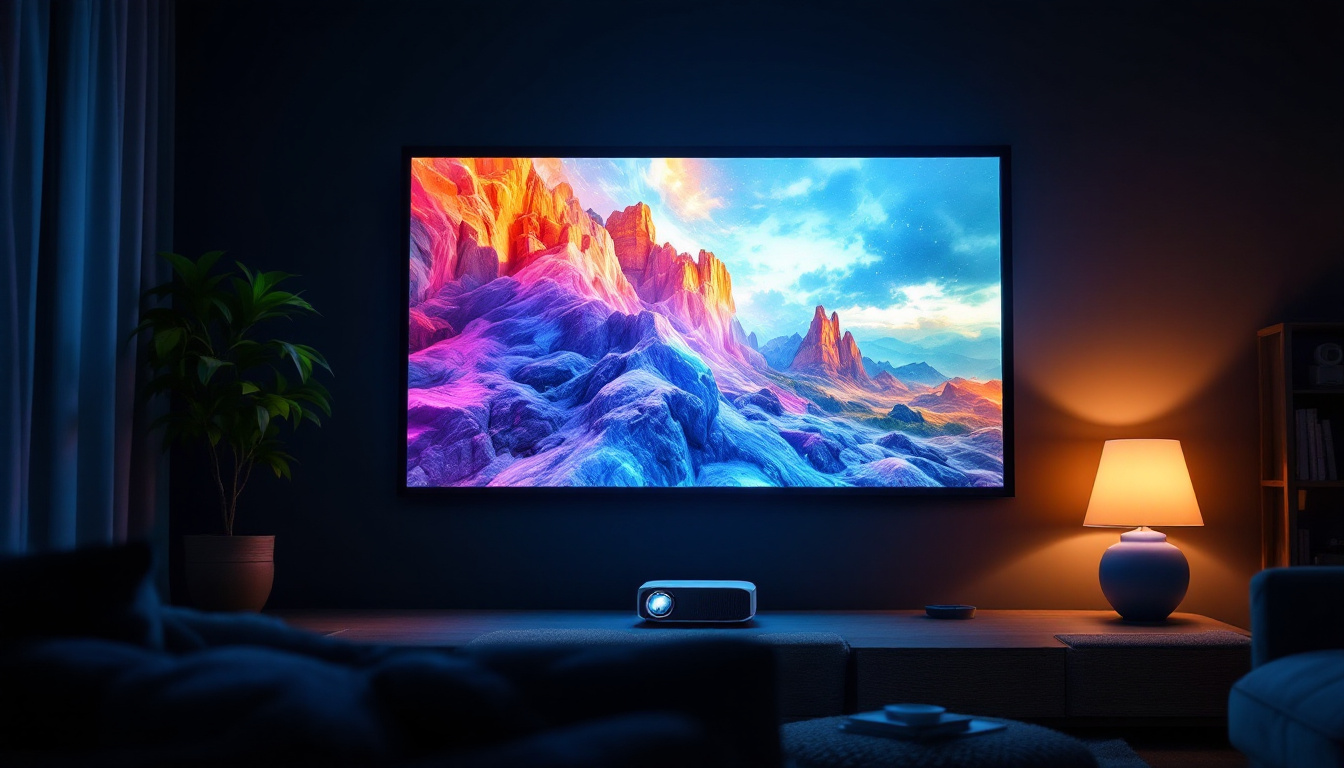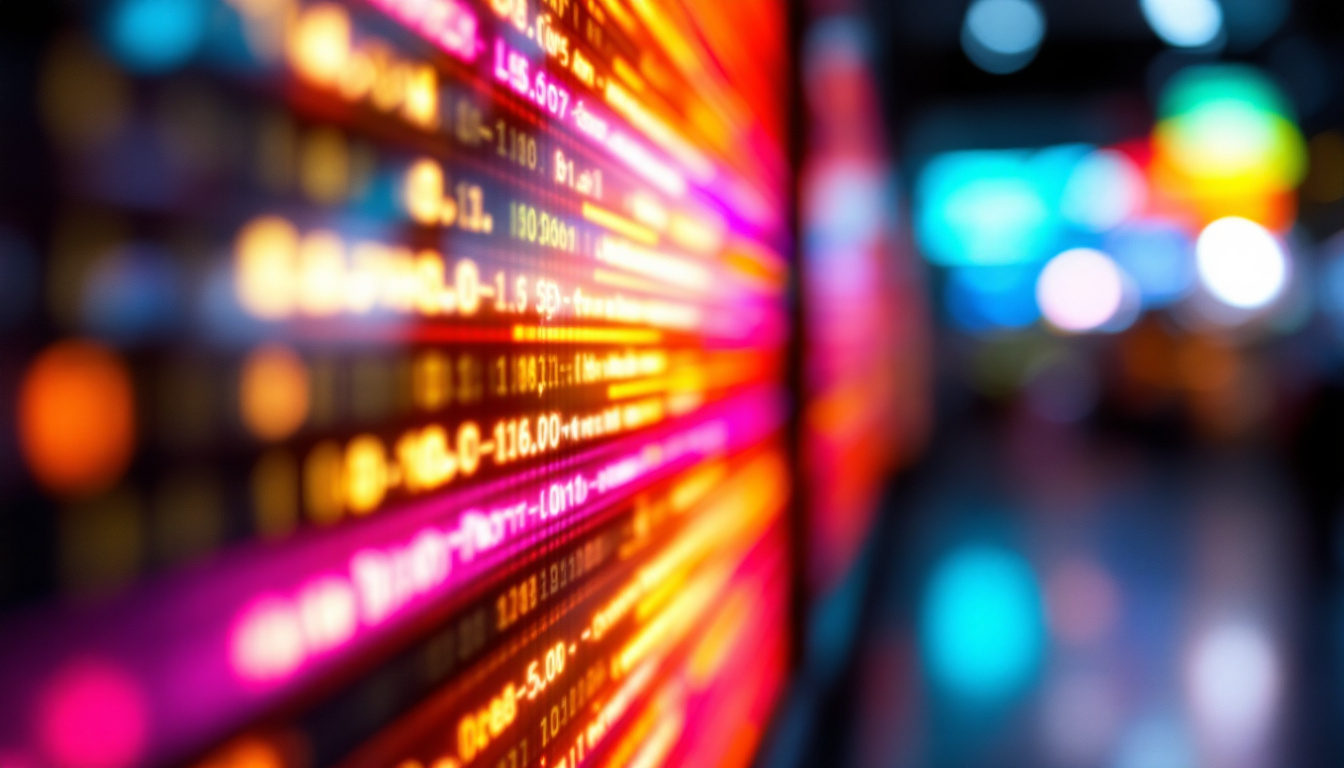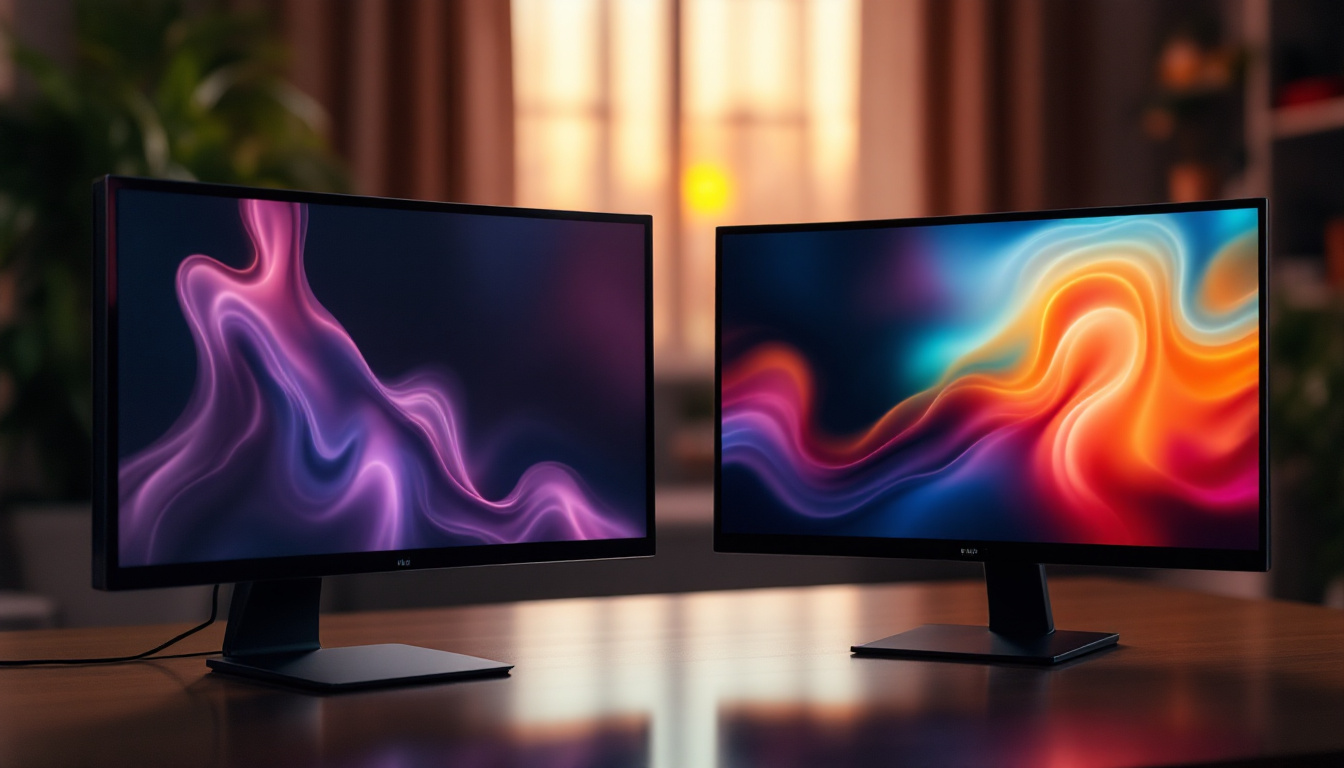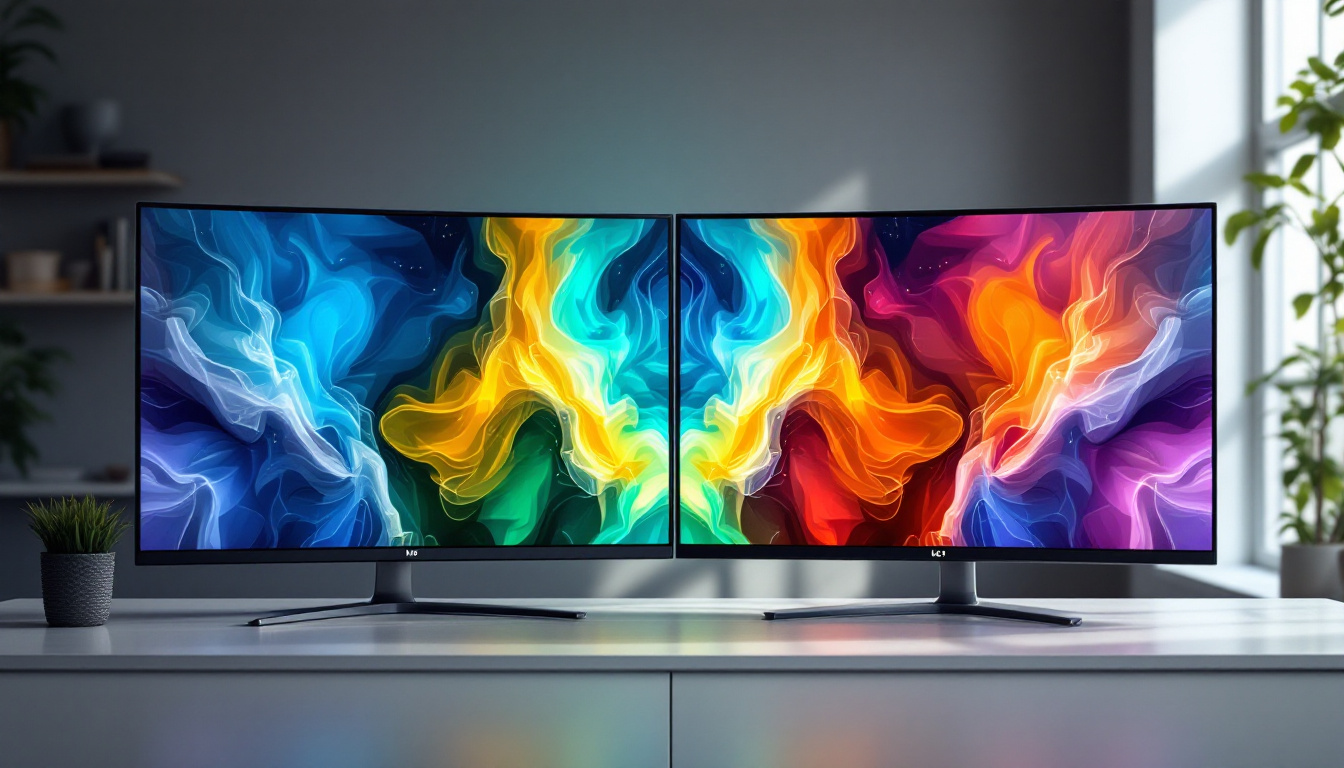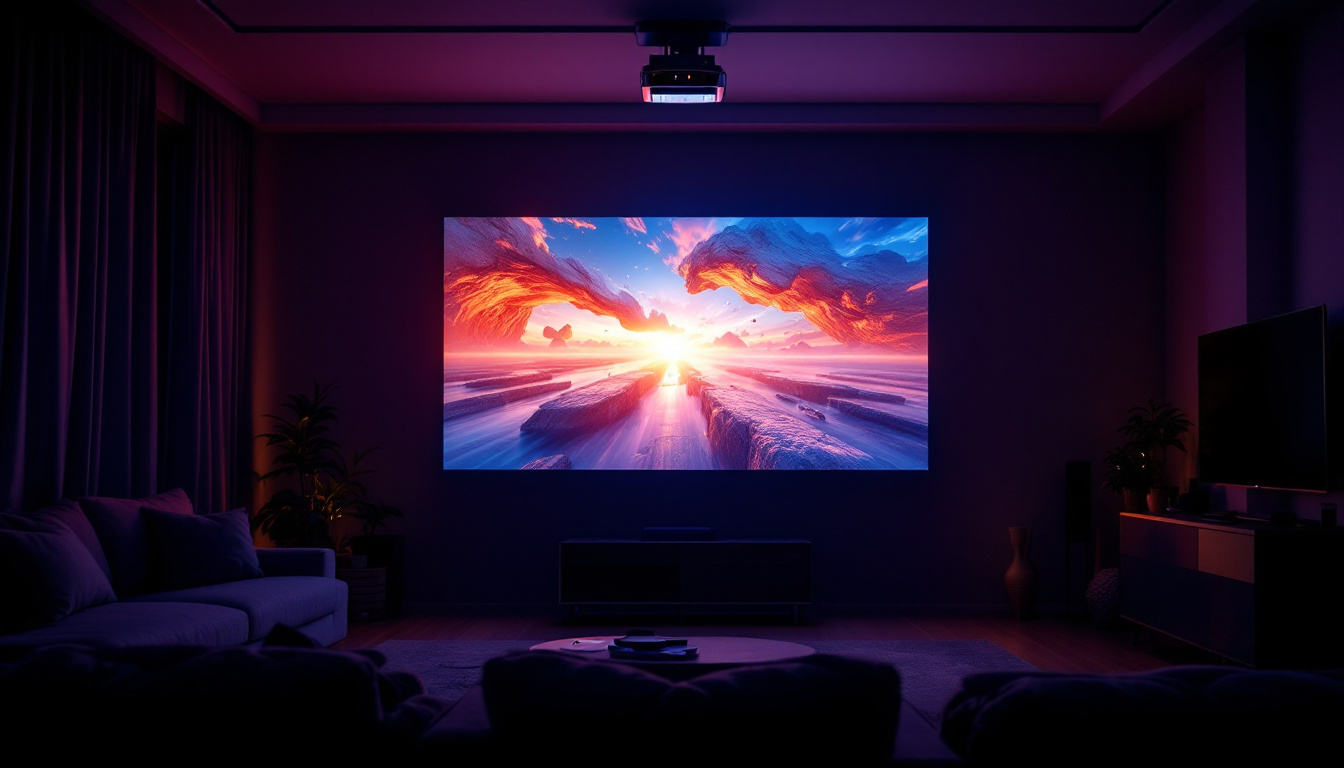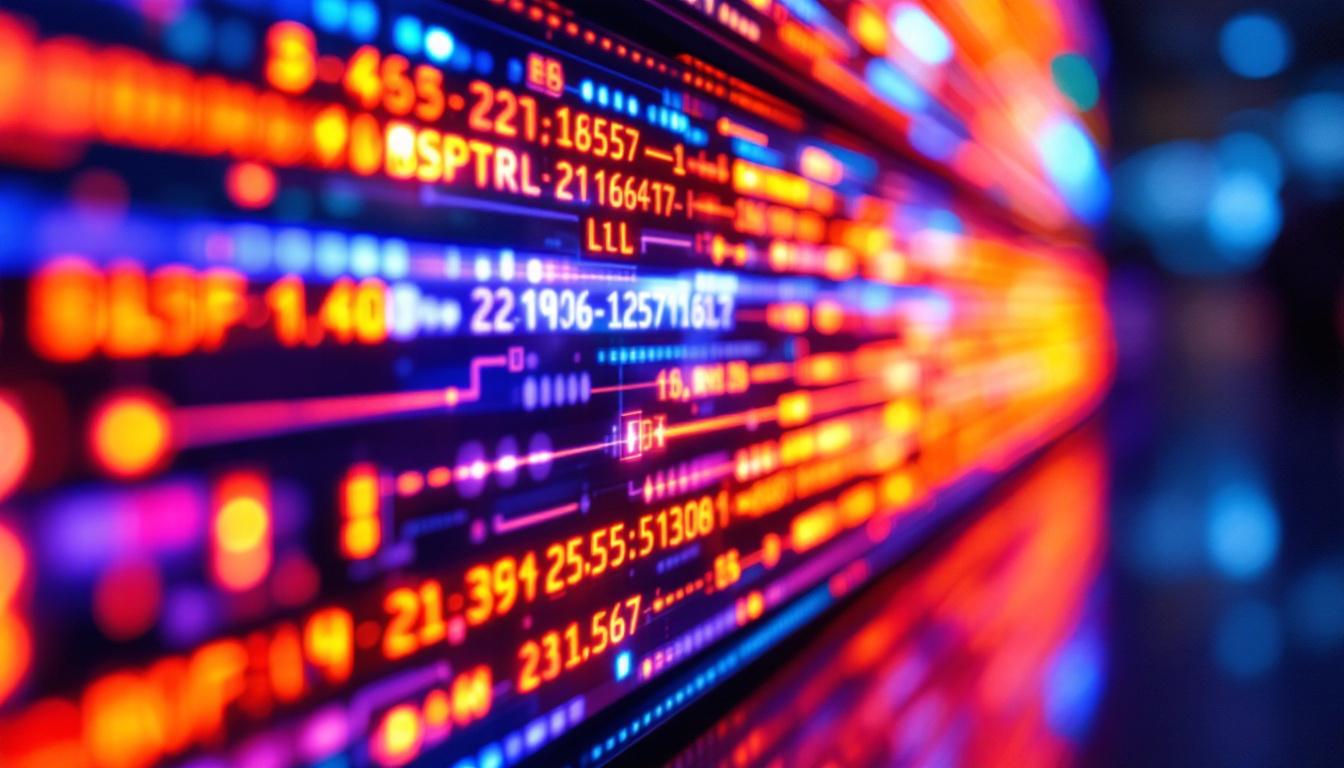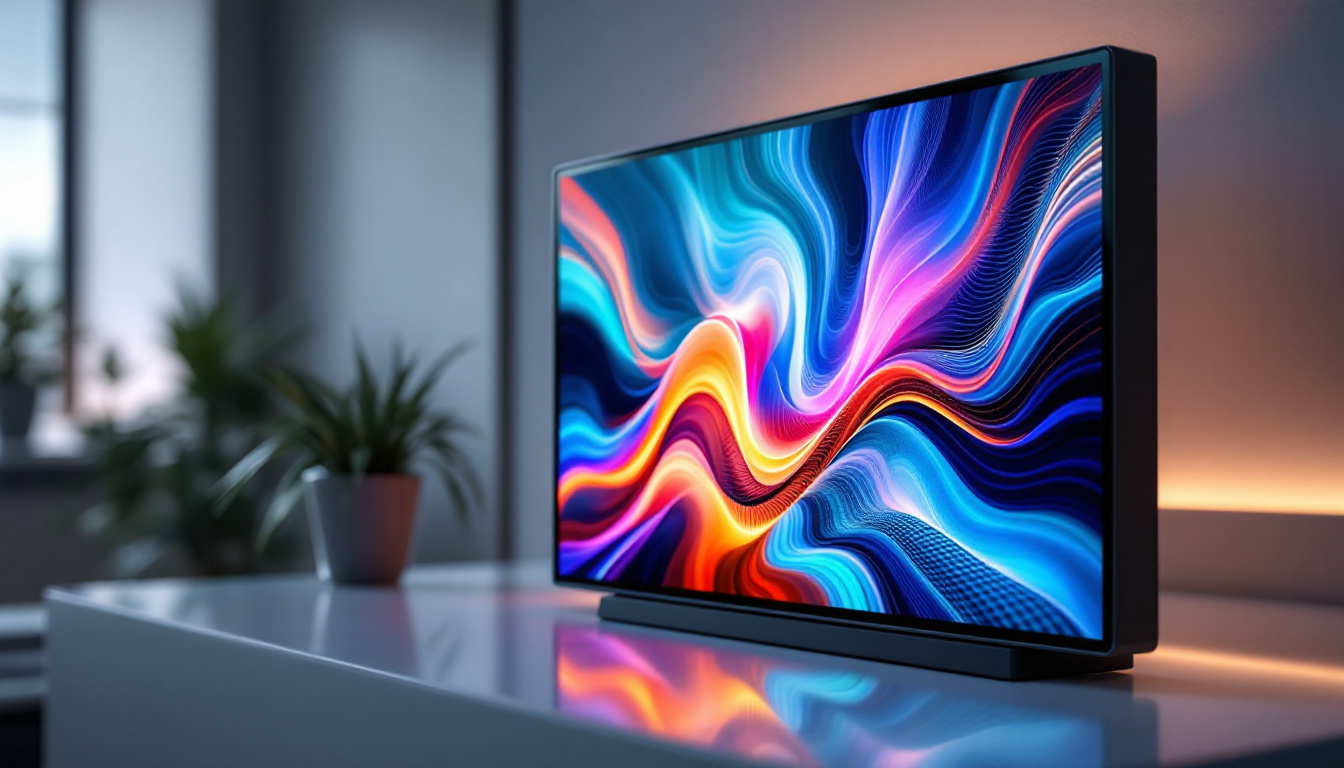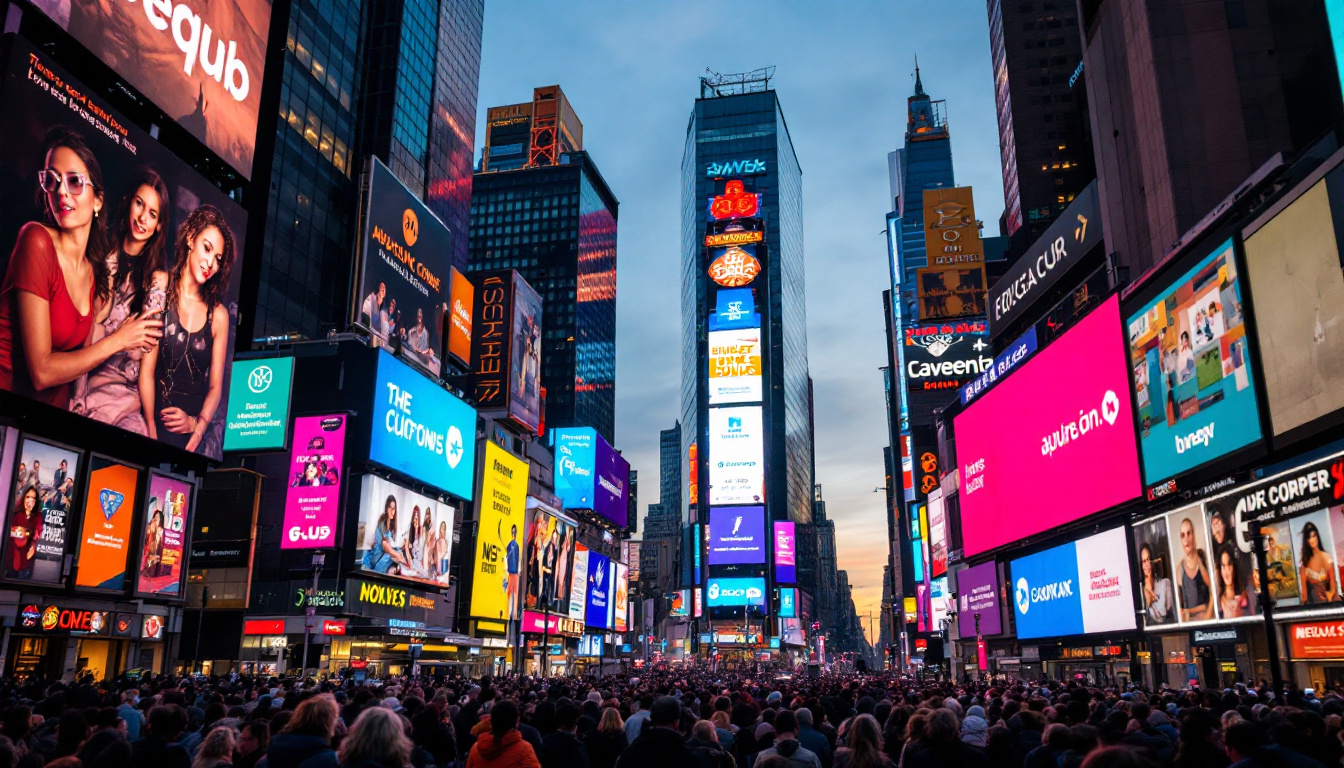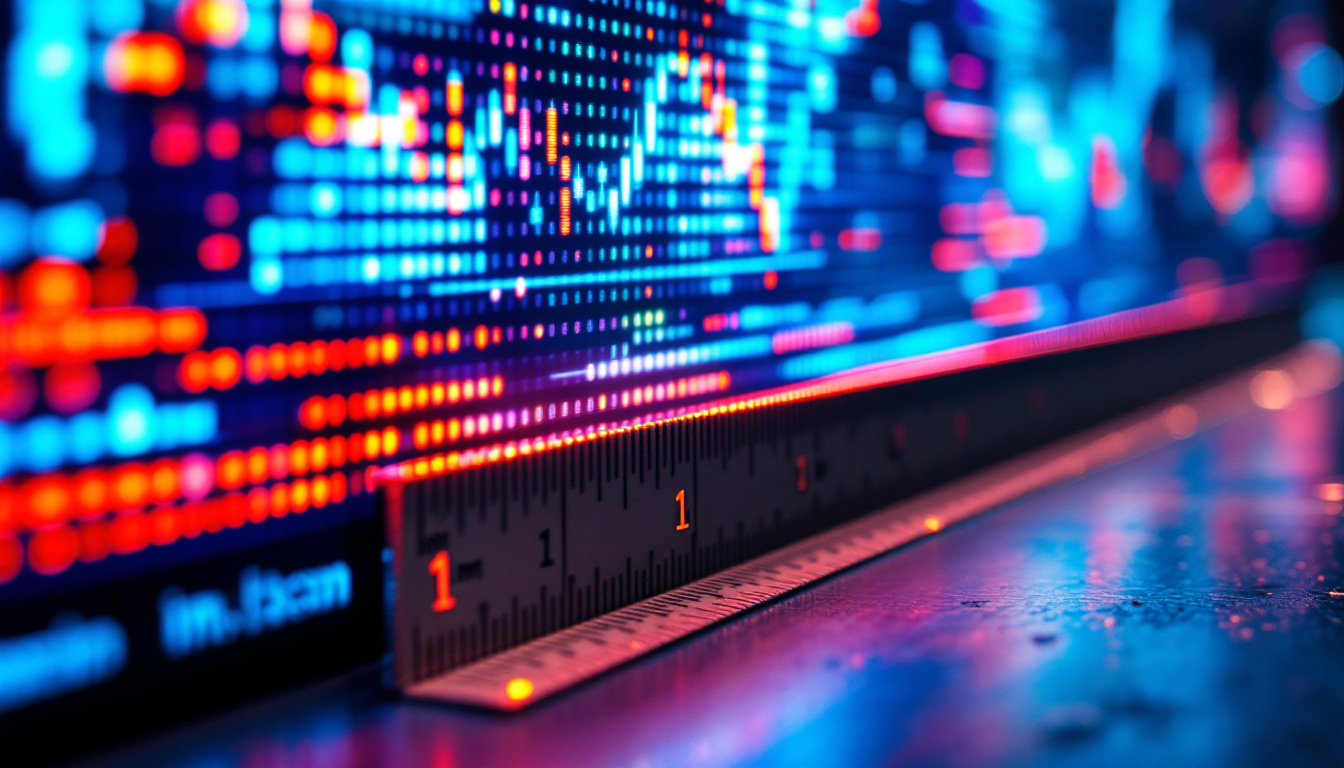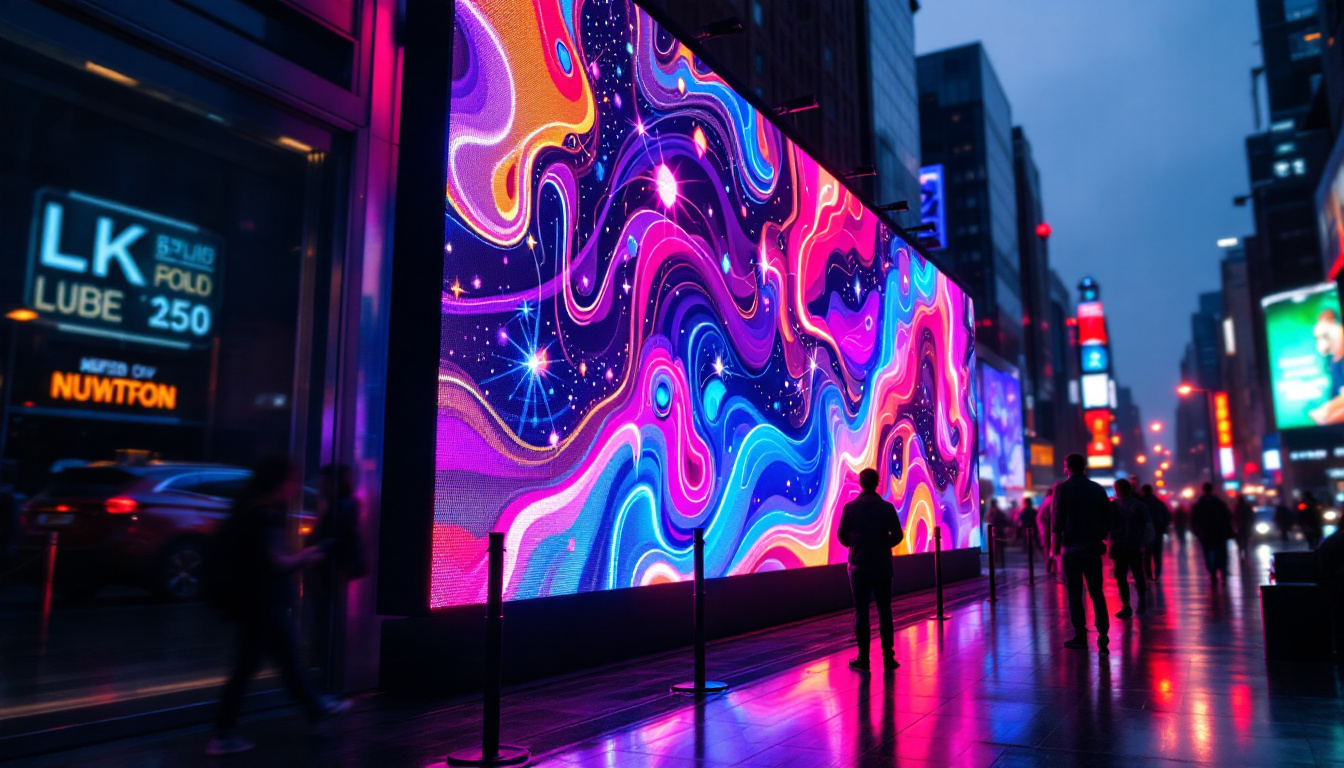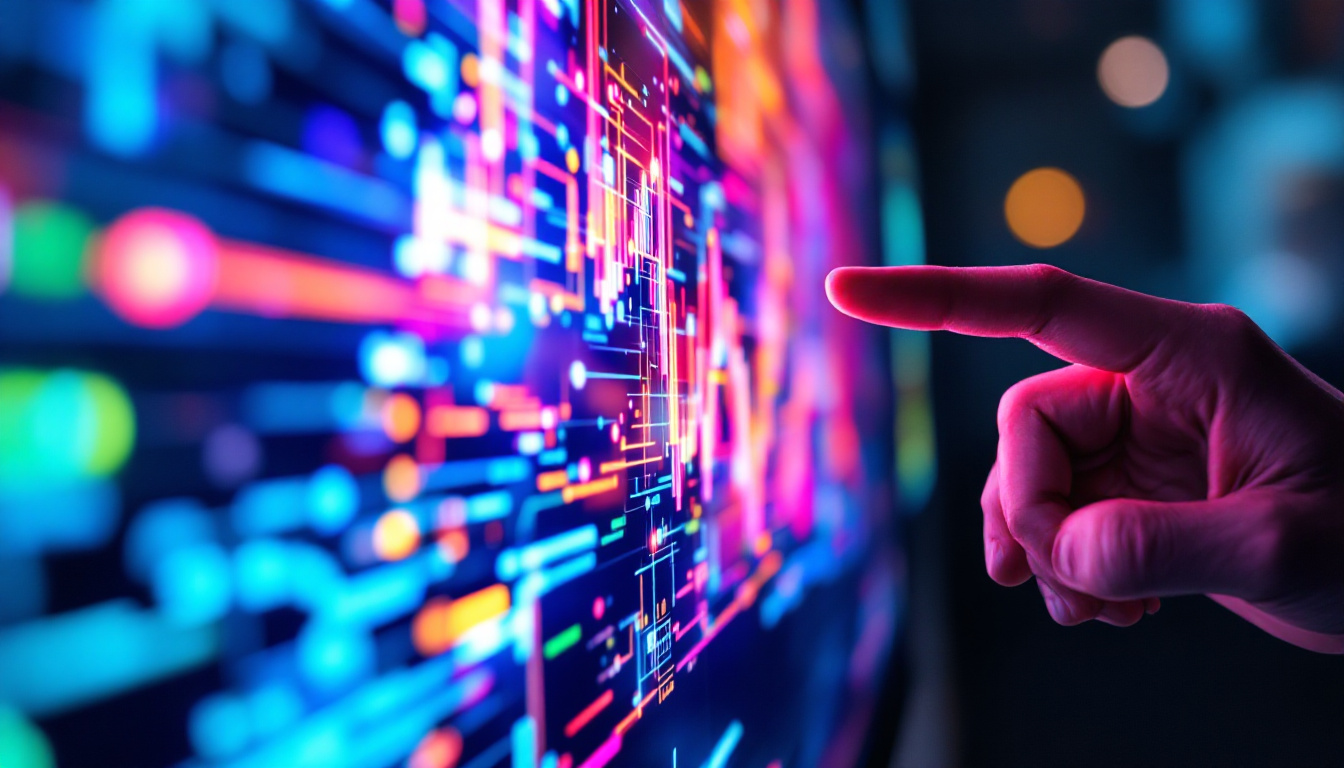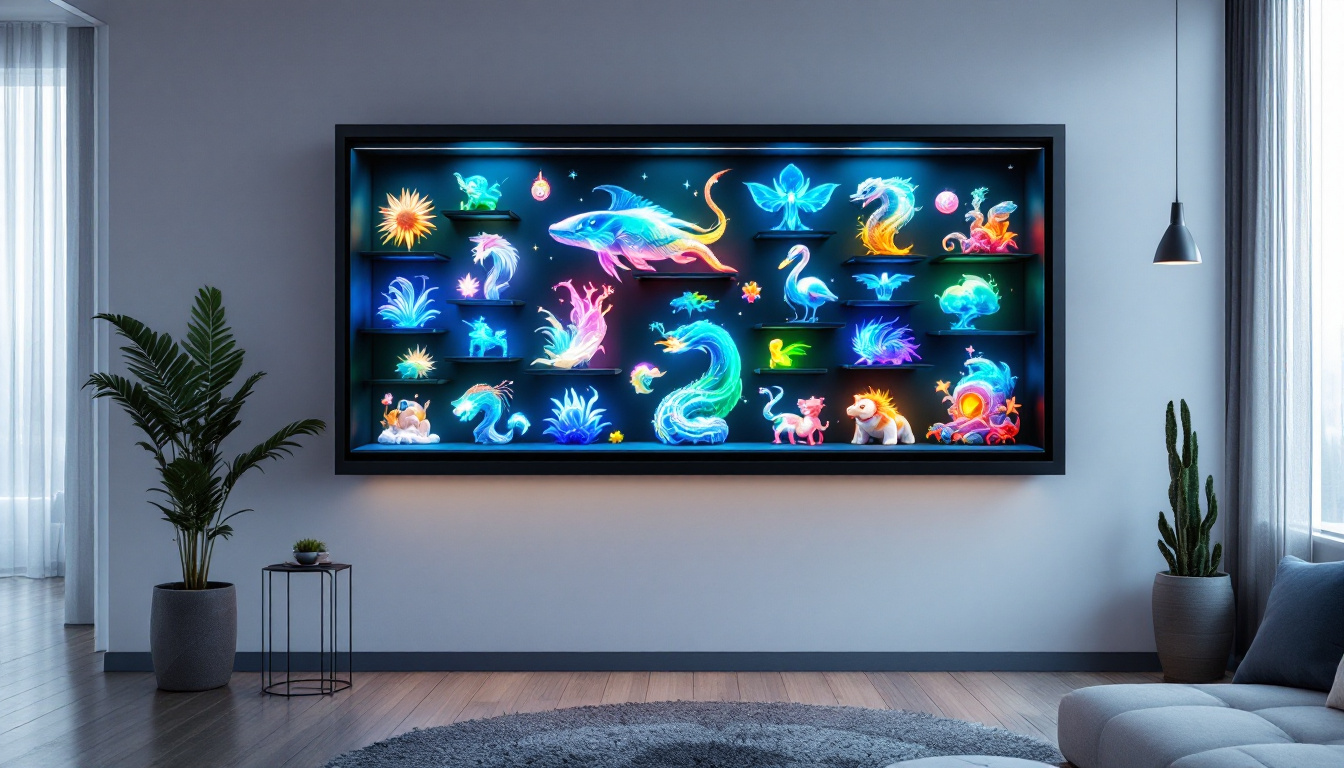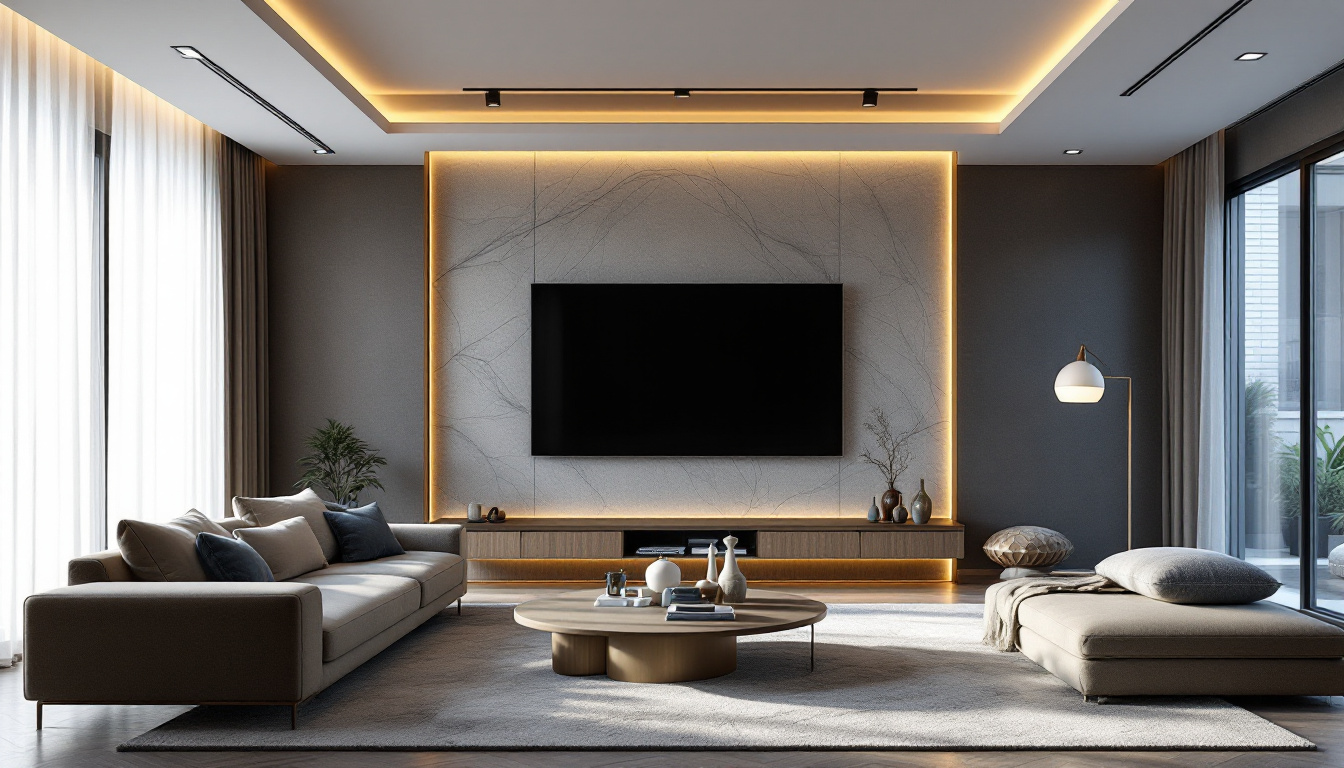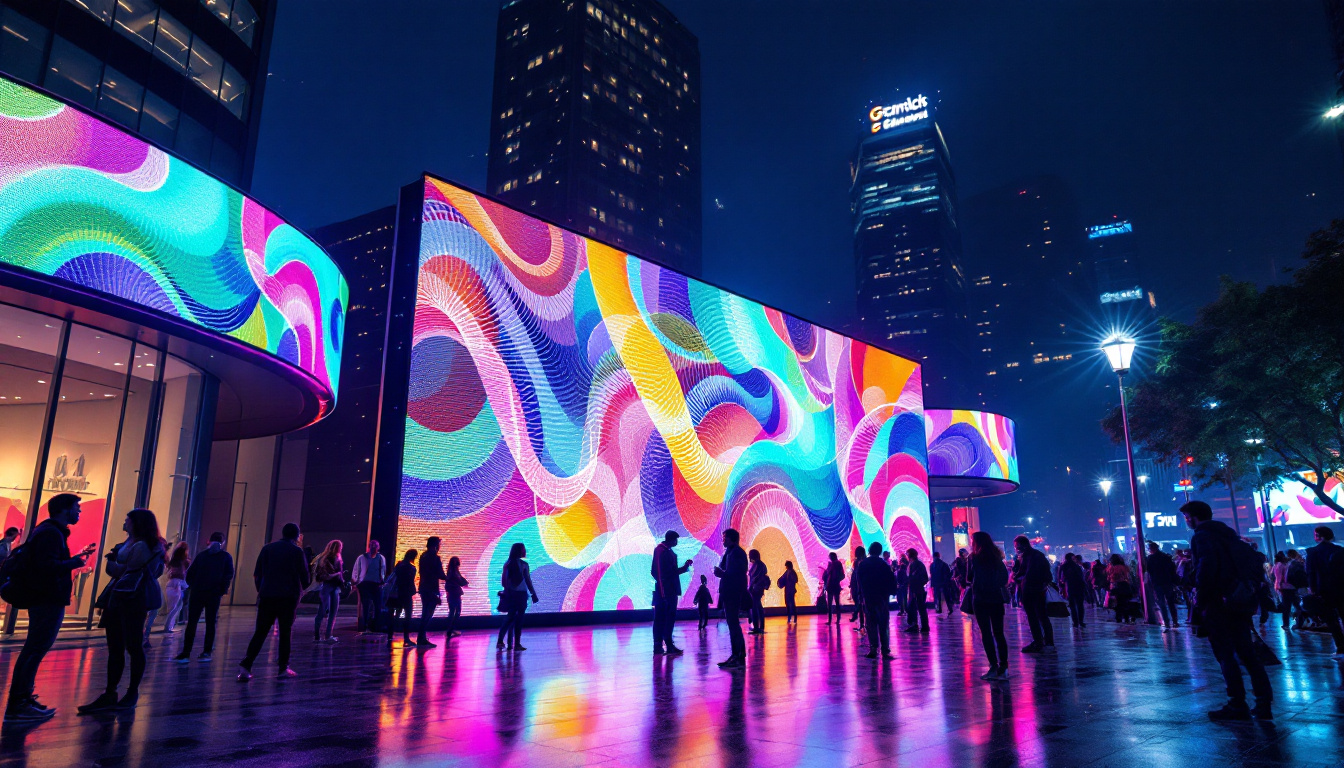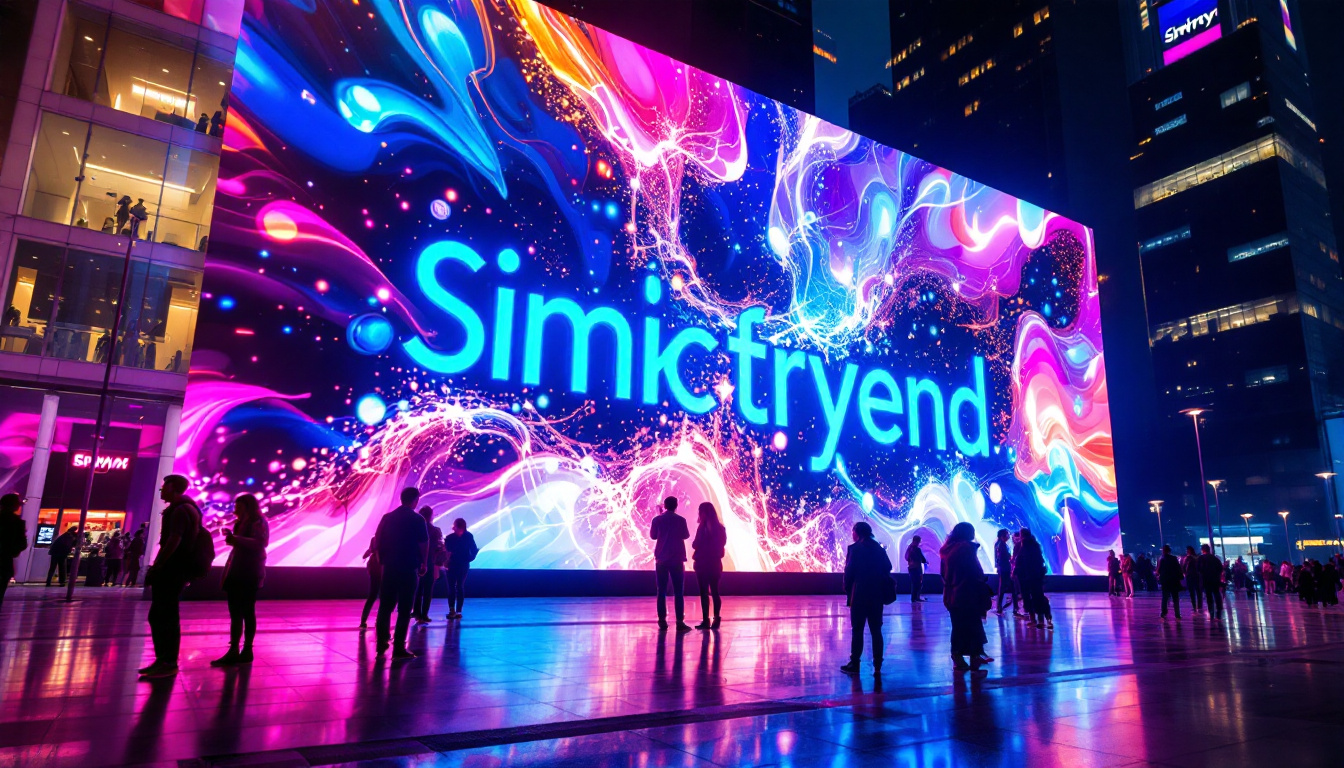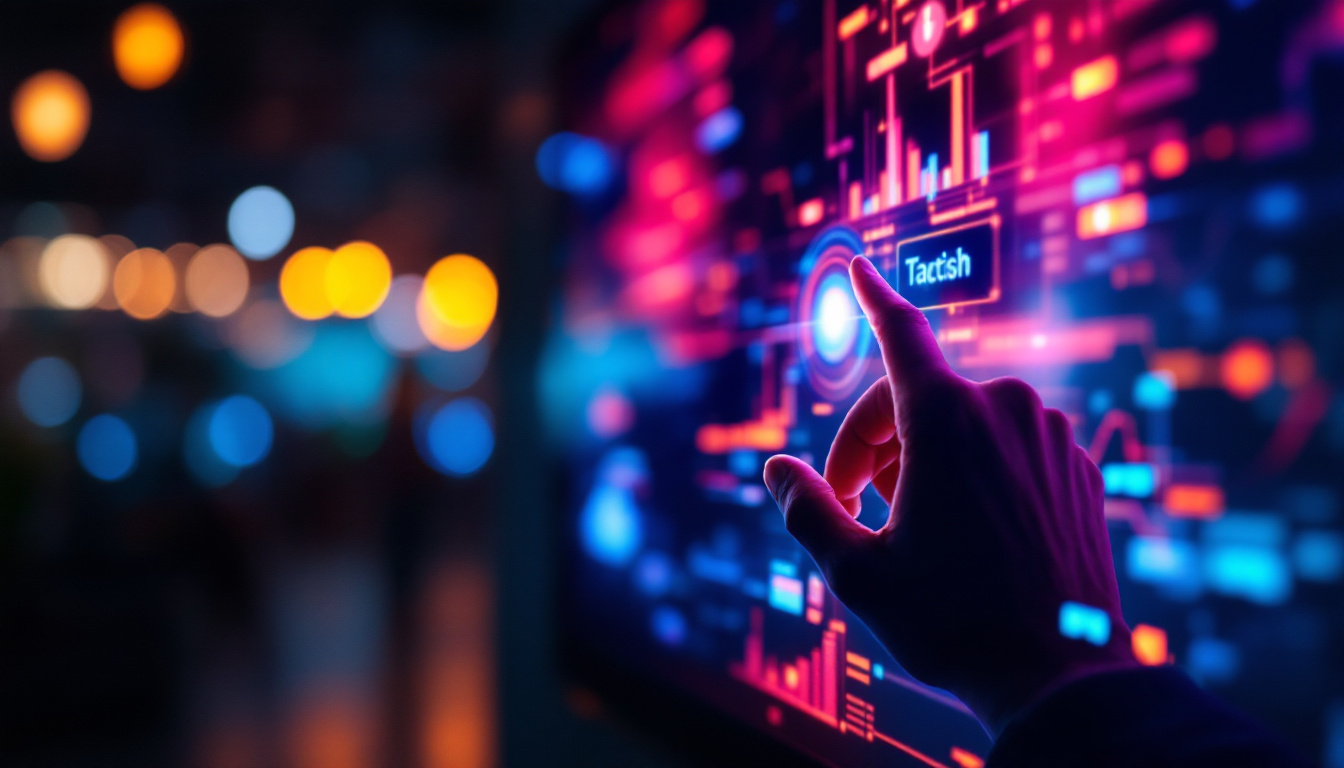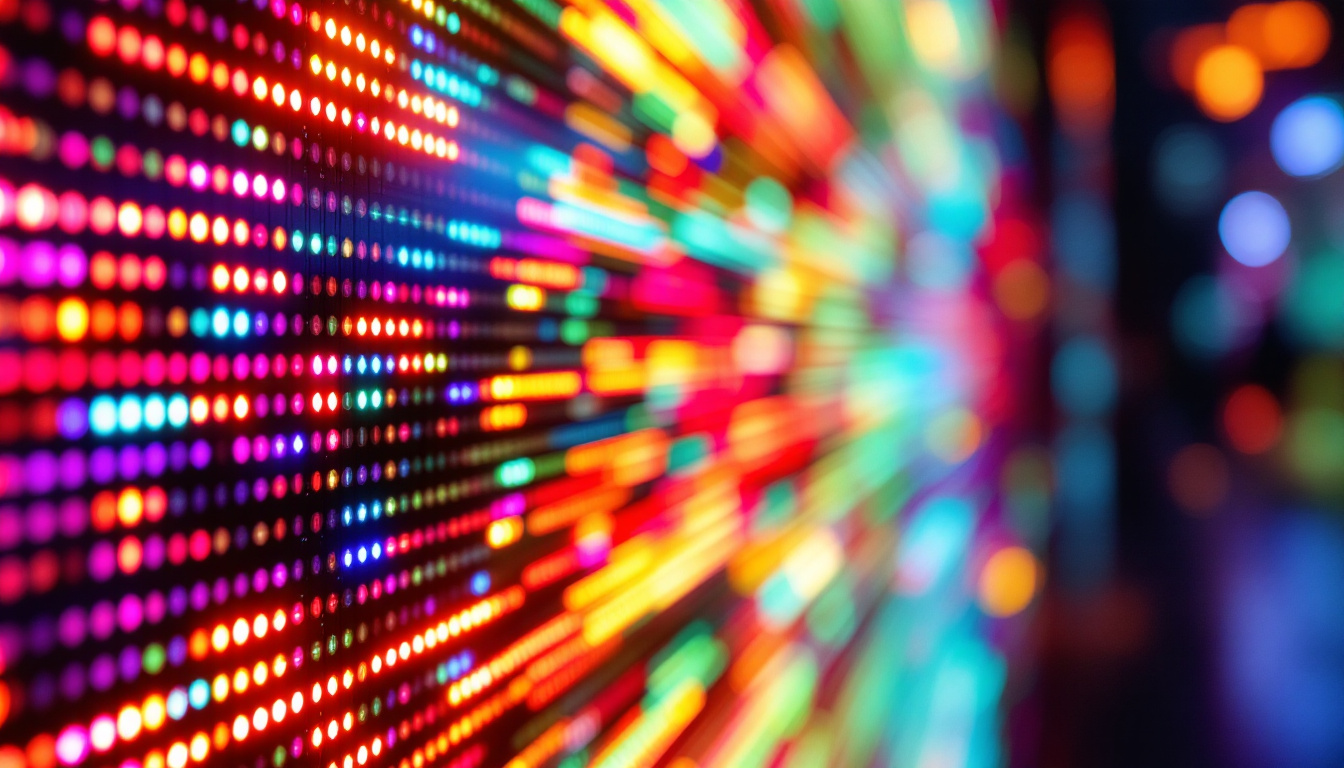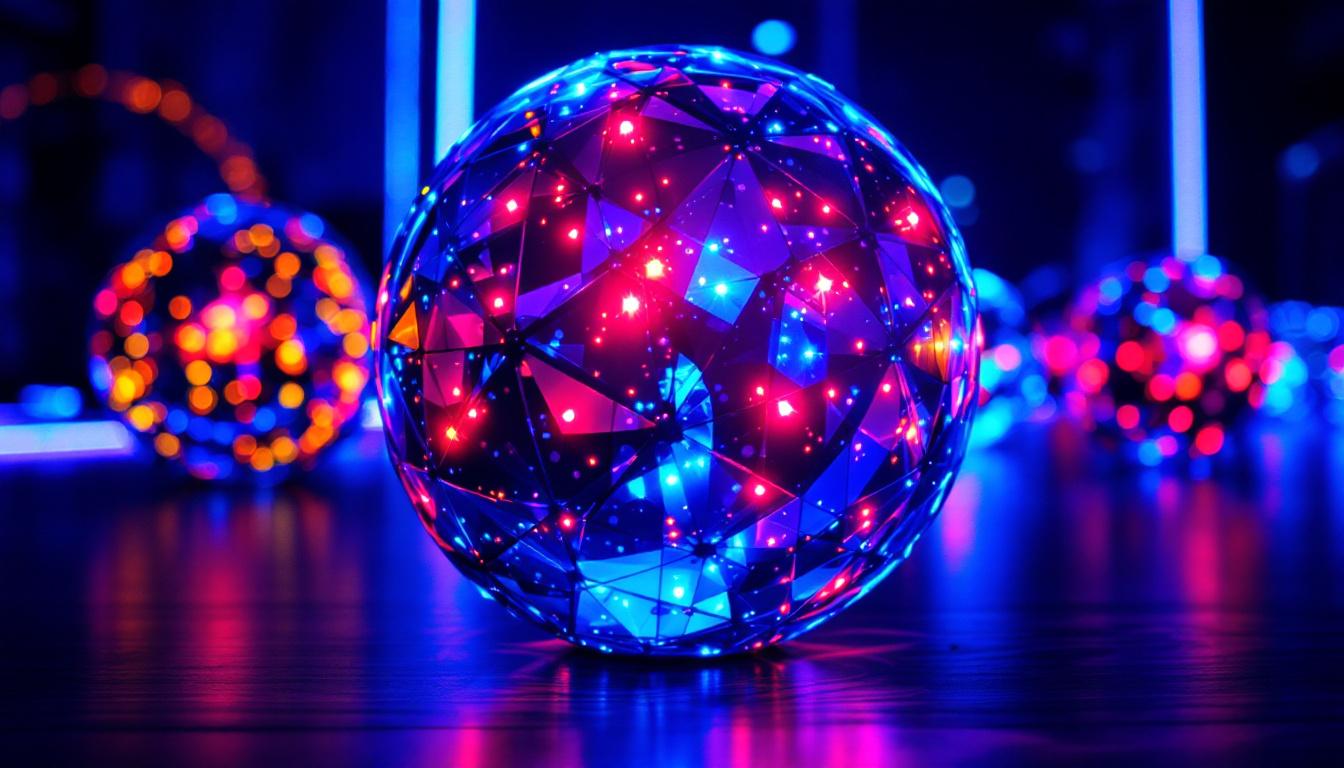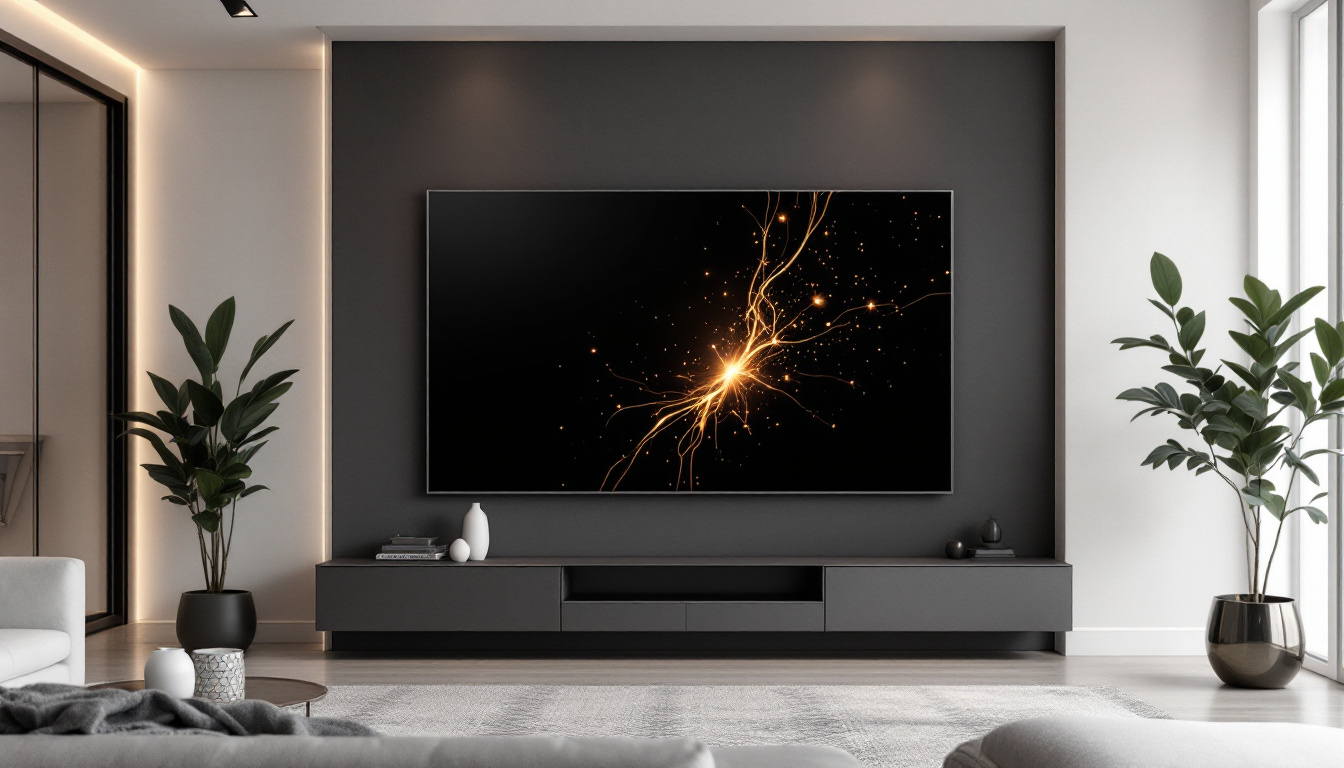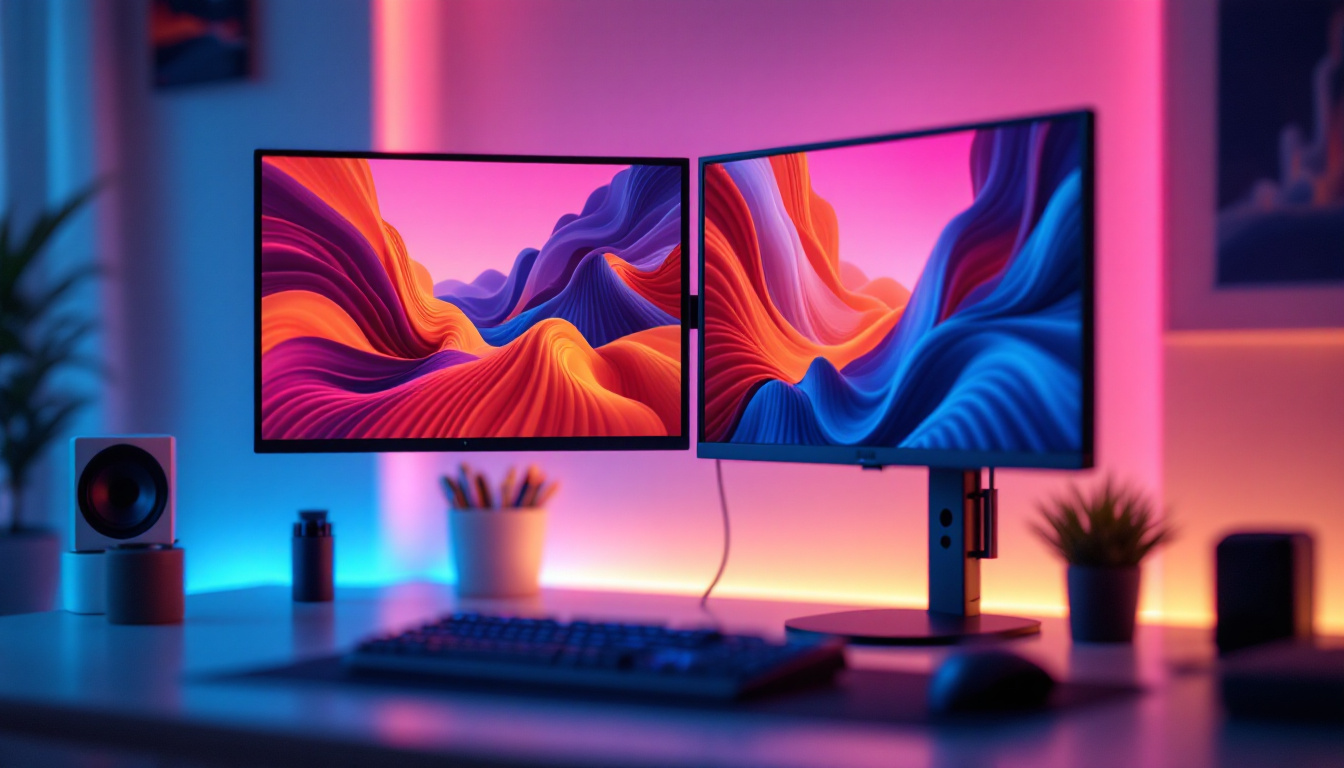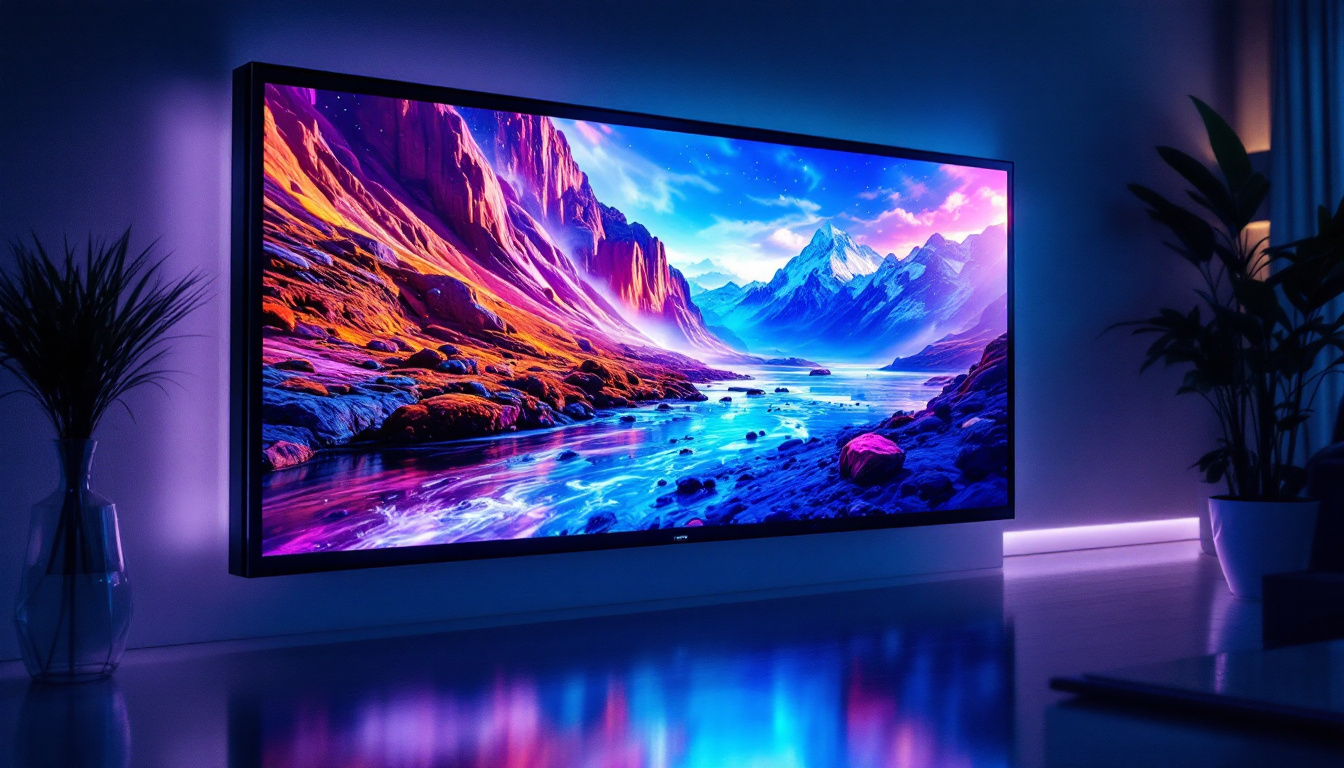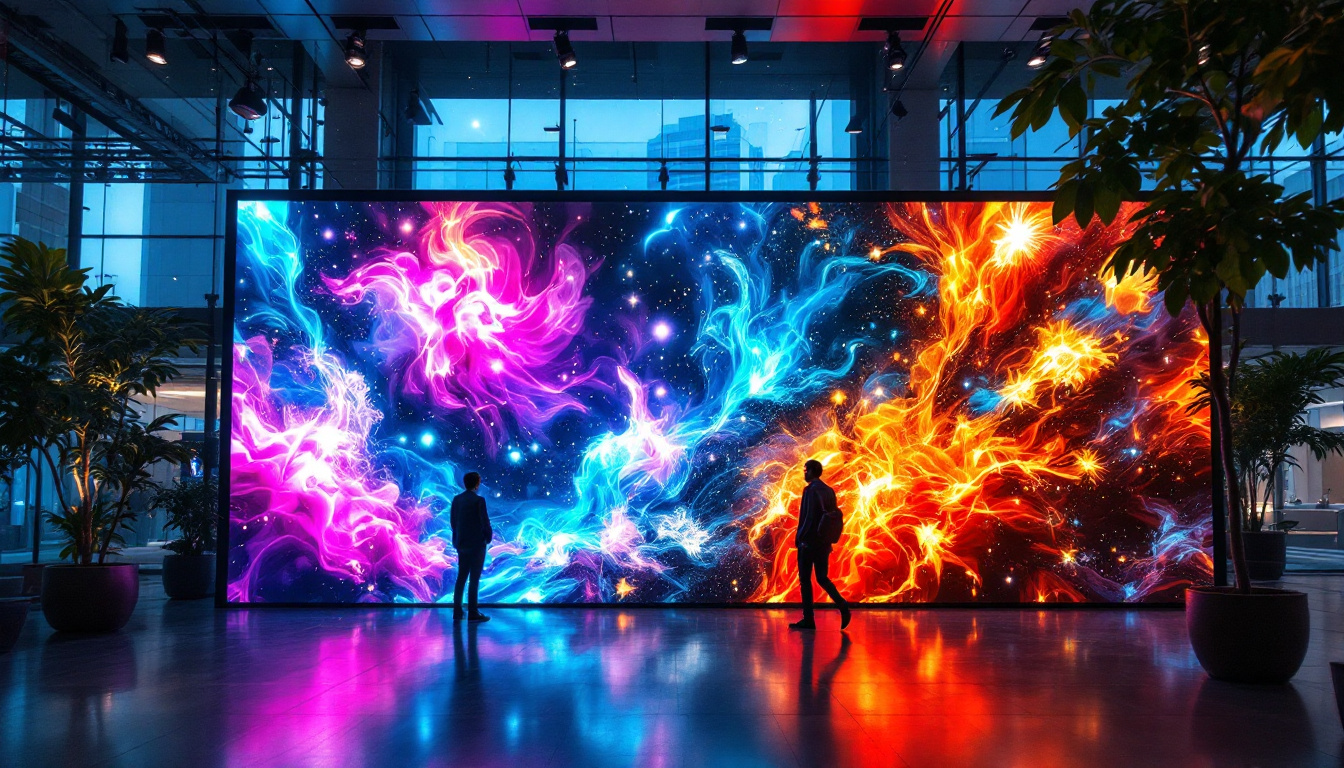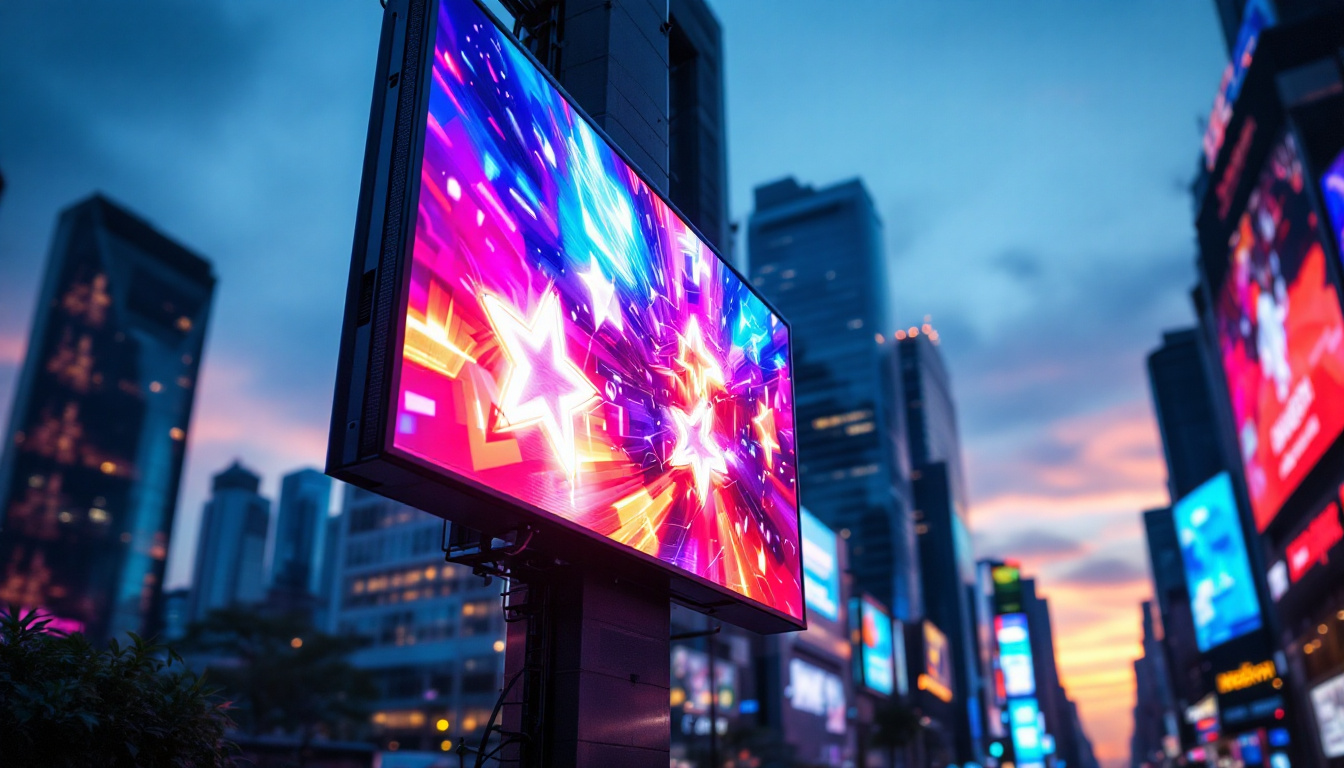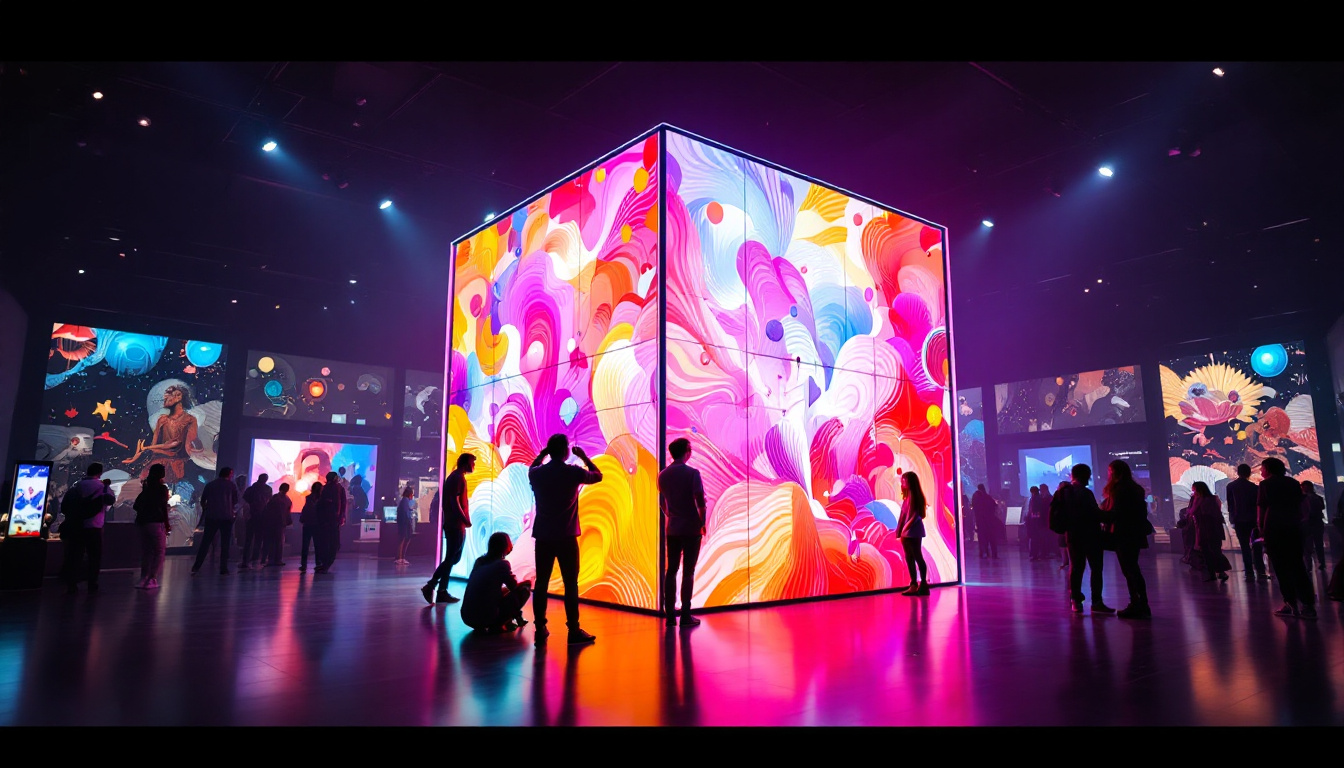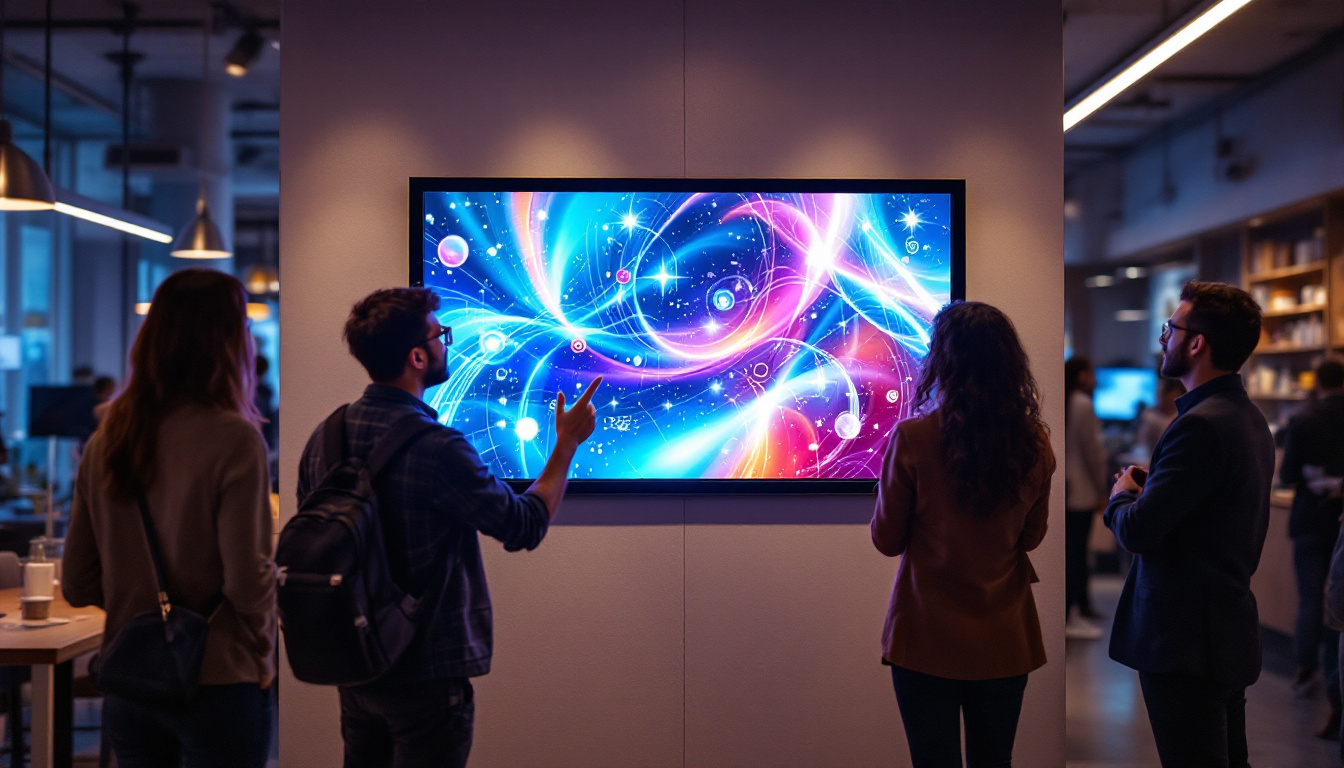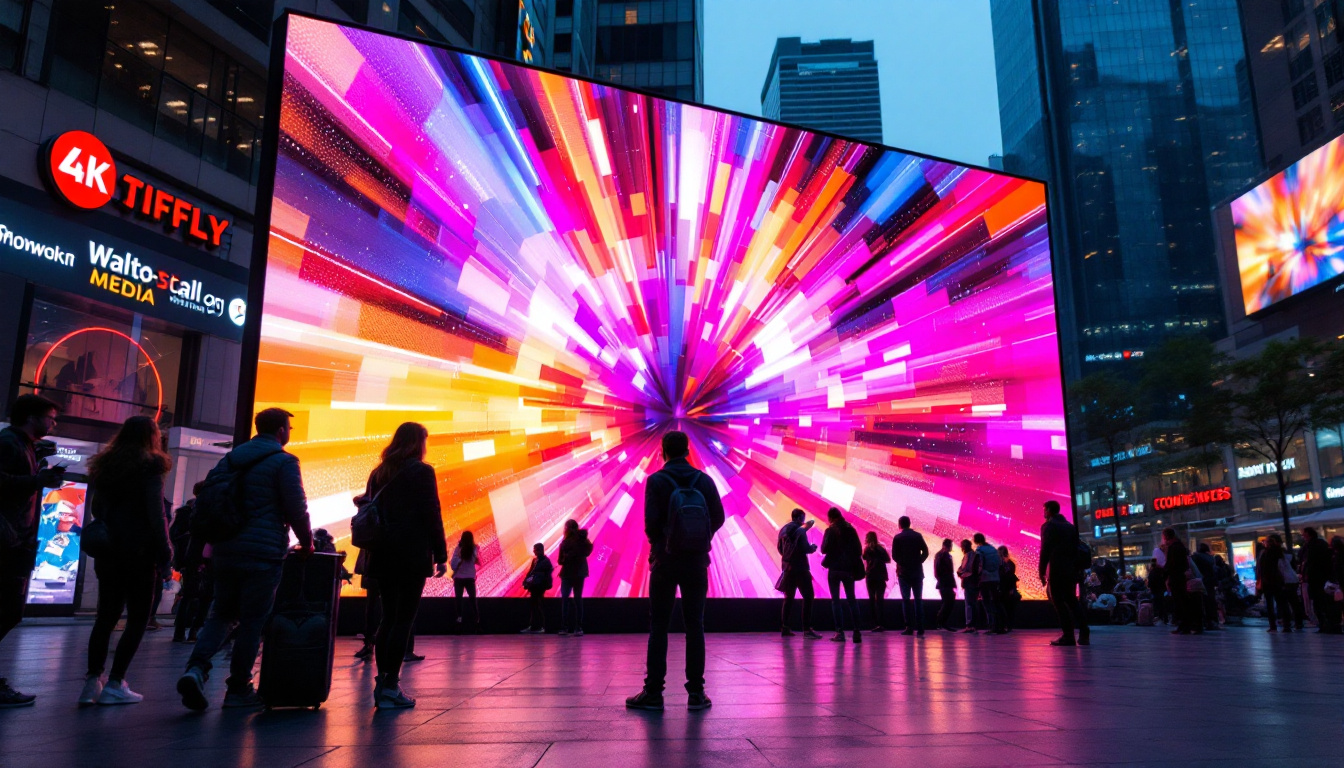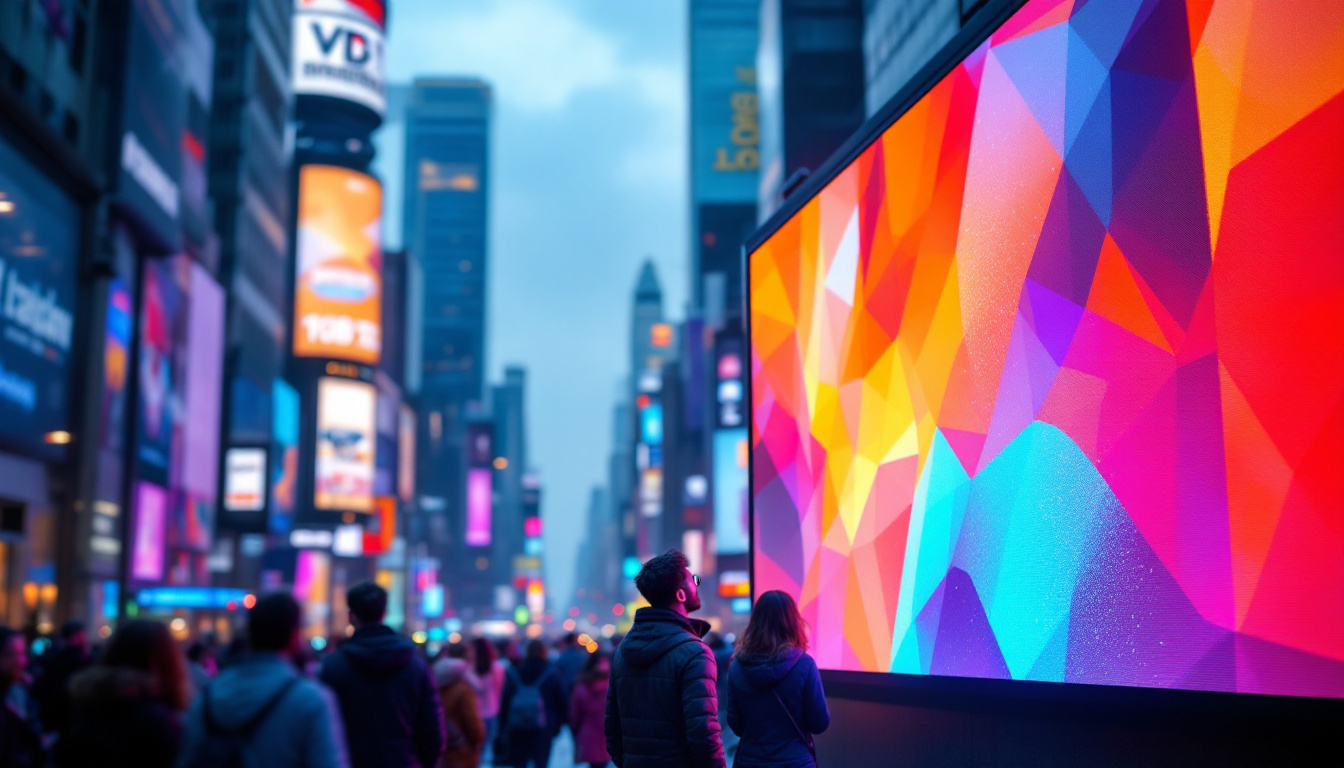In today’s fast-paced world, visual communication plays a crucial role in how information is conveyed and perceived. Among the various technologies available, LED displays have emerged as a dominant force in the realm of digital signage and visual presentations. This article delves into the intricacies of LED displays, exploring their functionality, advantages, applications, and the future of this dynamic technology.
Understanding LED Technology
Light Emitting Diodes (LEDs) are semiconductor devices that emit light when an electric current passes through them. This fundamental principle forms the backbone of LED displays, which are composed of numerous tiny LEDs arranged in a grid. These displays can produce vibrant colors and sharp images, making them ideal for a wide range of applications. The efficiency of LEDs also contributes to their popularity, as they consume significantly less energy compared to traditional incandescent bulbs, leading to lower electricity bills and a reduced carbon footprint.
How LED Displays Work
LED displays operate by combining red, green, and blue (RGB) LEDs to create a full spectrum of colors. Each pixel in an LED display consists of these three primary colors, which can be adjusted in intensity to produce the desired hue. When these pixels are illuminated in unison, they create the images and videos that captivate audiences. The rapid switching capability of LEDs allows for dynamic content, enabling displays to show everything from static images to high-definition video with fluid motion. This versatility is what makes LED technology a favorite in both commercial and entertainment sectors.
The technology behind LED displays can be categorized into two main types: direct-view and rear-projection. Direct-view LED displays consist of individual LEDs that are visible from the front, while rear-projection displays use a combination of light sources and projectors to create images on a screen. Each type has its own set of advantages and is suited for different environments. For instance, direct-view displays are often preferred in venues where space is limited and high brightness is required, while rear-projection systems can be more suitable for larger venues where the audience is positioned farther away from the screen.
Types of LED Displays
LED displays can be classified into several types based on their application and design. Some of the most common types include:
- Indoor LED Displays: These are designed for use in controlled environments such as shopping malls, airports, and conference centers. They typically have a higher pixel density for better image quality at close viewing distances, making them ideal for detailed graphics and presentations.
- Outdoor LED Displays: Built to withstand harsh weather conditions, outdoor LED displays are often used for billboards, sports arenas, and large-scale advertising. They are designed with lower pixel density but higher brightness to ensure visibility in direct sunlight. Additionally, many outdoor displays are equipped with protective casings to shield against rain, dust, and extreme temperatures.
- Transparent LED Displays: This innovative technology allows for the creation of displays that can be seen through, making them ideal for retail environments where visibility is essential. These displays not only serve as an advertising medium but also maintain the aesthetic appeal of the surroundings, blending seamlessly with the architecture of the space.
Furthermore, there are also specialized LED displays such as flexible LED screens that can be bent and shaped to fit various surfaces, and 3D LED displays that create an immersive viewing experience without the need for special glasses. The continuous advancement in LED technology has led to the development of high-definition and ultra-high-definition displays, which offer even greater clarity and detail, enhancing the viewer’s experience in both commercial and artistic applications. As the demand for energy-efficient and versatile display solutions grows, the future of LED technology looks promising, with ongoing innovations that push the boundaries of what is possible in visual communication.
Advantages of LED Displays
LED displays offer a multitude of benefits that make them a preferred choice for businesses and organizations looking to enhance their visual communication strategies. Here are some key advantages:
Energy Efficiency
One of the standout features of LED technology is its energy efficiency. Compared to traditional display technologies like LCD and plasma, LED displays consume significantly less power. This not only reduces operational costs but also contributes to a smaller carbon footprint, making LED displays an environmentally friendly option. Furthermore, many LED displays are designed with smart technology that allows for automatic brightness adjustments based on ambient light, further optimizing energy usage and extending the life of the display.
Brightness and Visibility
LED displays are renowned for their brightness, which makes them highly visible in various lighting conditions. This characteristic is particularly advantageous for outdoor applications where sunlight can wash out other types of displays. The high brightness levels ensure that content remains legible, even in bright environments. Additionally, LED technology offers a wide color gamut, allowing for vibrant and dynamic visuals that capture attention and engage audiences more effectively than traditional displays. This capability makes LED displays ideal for advertising, events, and public information systems.
Longevity and Durability
LED displays are designed to last. With a lifespan that often exceeds 100,000 hours, they are a long-term investment for any organization. Additionally, their robust construction makes them resistant to shocks and vibrations, further enhancing their durability in demanding environments. Many LED displays are also weatherproof and can withstand extreme temperatures, making them suitable for both indoor and outdoor installations. This resilience ensures that businesses can rely on their LED displays for consistent performance, reducing maintenance costs and downtime.
Versatility in Applications
Another significant advantage of LED displays is their versatility. They can be utilized in a wide range of applications, from retail environments showcasing promotional content to large-scale outdoor billboards that attract passing traffic. LED technology allows for creative installations, including curved and flexible displays that can fit into unconventional spaces. This adaptability means that businesses can tailor their visual communication to their specific needs, whether it’s for advertising, information dissemination, or entertainment purposes. Additionally, with advancements in technology, LED displays can now incorporate interactive features, further enhancing user engagement and providing a dynamic experience.
Low Maintenance Requirements
In addition to their longevity, LED displays require minimal maintenance compared to other display technologies. Their solid-state design means there are no fragile components that can easily break, and they do not require frequent bulb replacements. This low maintenance requirement not only saves time but also reduces the overall cost of ownership. Many manufacturers also offer warranties and support services, ensuring that businesses can quickly address any issues that may arise, further solidifying the reliability of LED displays in various applications.
Applications of LED Displays
The versatility of LED displays allows them to be used in a wide array of settings. From advertising to entertainment, their applications are virtually limitless.
Advertising and Marketing
LED displays have revolutionized the advertising industry. Dynamic content can be updated in real-time, allowing businesses to engage customers with timely promotions and announcements. Digital billboards, for instance, can rotate multiple advertisements, maximizing exposure and revenue potential.
Events and Entertainment
In the realm of entertainment, LED displays are a staple at concerts, festivals, and sporting events. Their ability to deliver vibrant visuals and captivating animations enhances the overall experience for attendees. Large-scale LED screens can display live feeds, graphics, and interactive content, creating an immersive atmosphere.
Corporate Communication
Many organizations utilize LED displays for internal communication. Whether in lobbies, conference rooms, or break areas, these displays can showcase important information, company news, and performance metrics. This fosters a culture of transparency and keeps employees informed and engaged.
Challenges and Considerations
While LED displays offer numerous advantages, there are also challenges and considerations that potential users should be aware of.
Initial Investment
The initial cost of LED displays can be higher than traditional display technologies. However, it is essential to view this as a long-term investment. The energy savings, longevity, and reduced maintenance costs often outweigh the upfront expenses, leading to a favorable return on investment over time.
Installation and Maintenance
Proper installation and maintenance are crucial for the optimal performance of LED displays. Depending on the size and complexity of the installation, specialized expertise may be required. Regular maintenance is also necessary to ensure that the displays continue to function at peak performance, which can involve cleaning, software updates, and hardware checks.
The Future of LED Displays
As technology continues to evolve, the future of LED displays looks promising. Innovations in design, functionality, and interactivity are on the horizon, paving the way for even more engaging visual experiences.
Advancements in Technology
Emerging technologies such as MicroLED and MiniLED are set to redefine the landscape of LED displays. These advancements promise higher resolution, improved color accuracy, and even greater energy efficiency. As these technologies become more mainstream, users can expect to see displays that are thinner, lighter, and more versatile than ever before.
Integration with Smart Technology
The integration of LED displays with smart technology is another exciting development. With the rise of the Internet of Things (IoT), LED displays can be connected to various sensors and devices. This allows for real-time data display, interactive content, and personalized experiences tailored to specific audiences.
Conclusion
LED displays have transformed the way information is communicated and consumed. Their energy efficiency, brightness, and durability make them an attractive option for a wide range of applications, from advertising to corporate communication. While there are challenges to consider, the long-term benefits often outweigh the initial investment.
As technology continues to advance, the future of LED displays is poised for growth and innovation. By embracing these developments, businesses and organizations can enhance their visual communication strategies and create more engaging experiences for their audiences.
In a world where visual impact is paramount, LED displays stand out as a powerful tool for capturing attention and conveying messages effectively. Whether used in retail, entertainment, or corporate settings, their potential is limitless, making them an essential component of modern communication.
Discover LumenMatrix’s Innovative LED Solutions
Ready to elevate your visual communication with cutting-edge LED technology? Explore LumenMatrix’s comprehensive range of LED display modules, tailored to meet the diverse needs of any application. From vibrant Indoor LED Walls to dynamic Outdoor LED Displays, and from sleek LED Posters to immersive LED Sports and Floor Displays, LumenMatrix has the perfect solution to captivate your audience. Embrace the future of digital signage with our Custom, All-in-One, and Transparent LED Displays, designed to deliver unparalleled brand visibility and engaging experiences. Check out LumenMatrix LED Display Solutions today and transform the way you share your message with the world.

